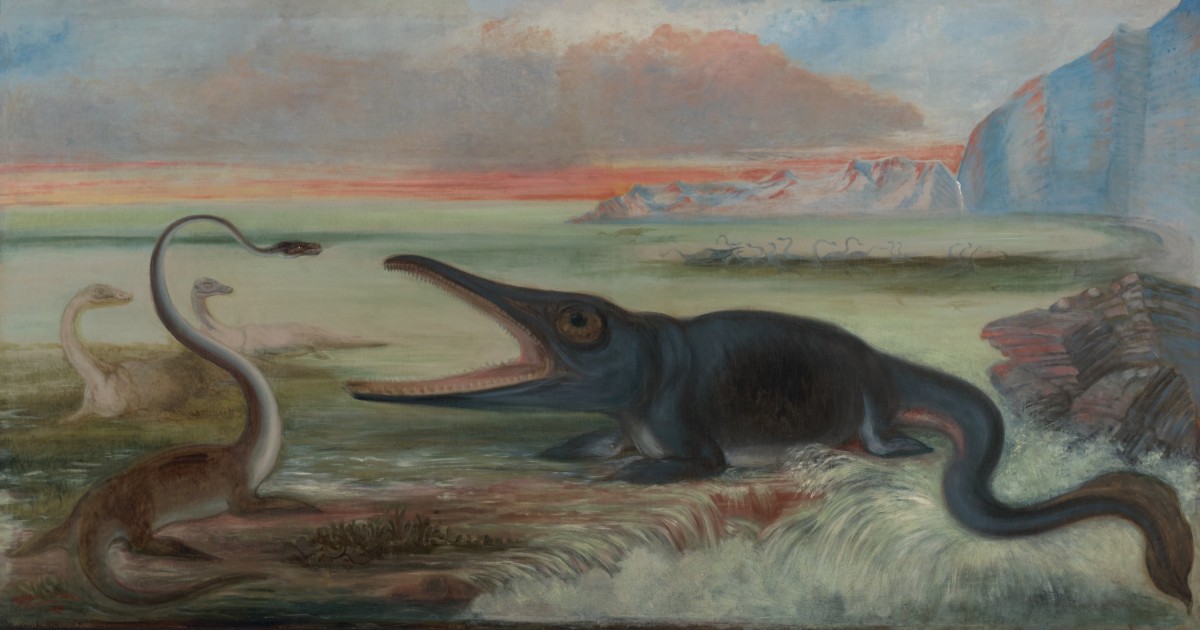Making New Out of the Old: Recent Biological Advances on Mesozoic Marine Reptiles
A special issue of Diversity (ISSN 1424-2818). This special issue belongs to the section "Phylogeny and Evolution".
Deadline for manuscript submissions: closed (31 March 2024) | Viewed by 3067

Image courtesy of Benjamin Waterhouse Hawkins
Special Issue Editor
Interests: systematics; phylogeny; palaeobiogeography; palaeobiology; palaeoecology and science history of Late Cretaceous marine reptiles from the northern and southern margins of the Mediterranean Tethys
Special Issue Information
Dear Colleagues,
A secondary return to aquatic life is a major evolutionary phenomenon in vertebrate history. Although some pioneers returned to aquatic life by the end of the Paleozoic era, this phenomenon is best illustrated during the Mesozoic (with reptiles) and Cenozoic (with mammals) eras.
During the Mesozoic era, about ten clades of reptiles underwent a dramatic return to aquatic life; in doing so, they colonized most marine environments, exhibiting great systematic diversity and astonishing ecological disparity. Many were among the greatest marine predators of their time, and some, such as ichthyosaurs, plesiosaurs and mosasaurs, were iconic clades of large Mesozoic ‘gigantic saurians’ that mirrored terrestrial dinosaurs.
These marine reptiles illustrate a mosaic of morphological, physiological and ecological adaptations to an aquatic lifestyle, some of which are convergent with those found in Cenozoic marine mammals, and others completely unique.
This volume aims to present recent biological advances made through the discovery of exceptionally preserved specimens and/or the use of modern methods. As such, it will focus mainly (but not exclusively) on topics such as locomotion modes and sensory systems, physiology and metabolism, reproduction and predation modes, and soft tissues and colors.
Dr. Nathalie Bardet
Guest Editor
Manuscript Submission Information
Manuscripts should be submitted online at www.mdpi.com by registering and logging in to this website. Once you are registered, click here to go to the submission form. Manuscripts can be submitted until the deadline. All submissions that pass pre-check are peer-reviewed. Accepted papers will be published continuously in the journal (as soon as accepted) and will be listed together on the special issue website. Research articles, review articles as well as short communications are invited. For planned papers, a title and short abstract (about 100 words) can be sent to the Editorial Office for announcement on this website.
Submitted manuscripts should not have been published previously, nor be under consideration for publication elsewhere (except conference proceedings papers). All manuscripts are thoroughly refereed through a single-blind peer-review process. A guide for authors and other relevant information for submission of manuscripts is available on the Instructions for Authors page. Diversity is an international peer-reviewed open access monthly journal published by MDPI.
Please visit the Instructions for Authors page before submitting a manuscript. The Article Processing Charge (APC) for publication in this open access journal is 2600 CHF (Swiss Francs). Submitted papers should be well formatted and use good English. Authors may use MDPI's English editing service prior to publication or during author revisions.
Keywords
- Mesozoic
- marine reptiles
- biology





